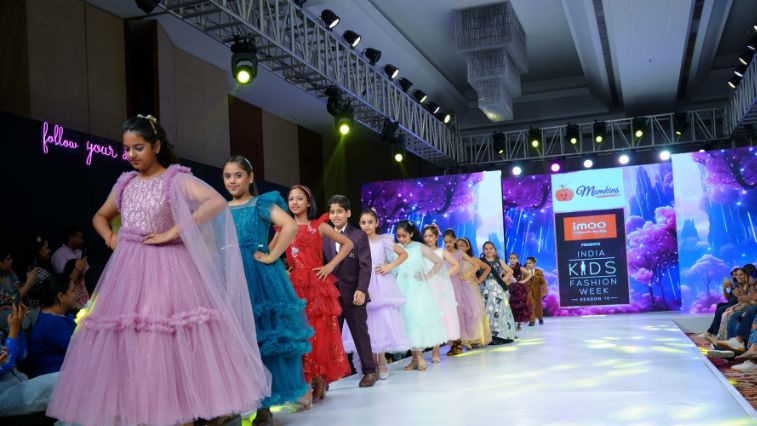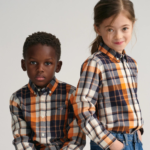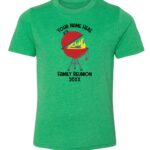Emerging sustainable fashion brands for children focus on eco-friendly materials and ethical production practices. These brands aim to create stylish, durable clothing while promoting environmental consciousness.
Sustainable fashion for children is gaining momentum as parents seek eco-friendly options. The rise of conscious consumerism drives brands to prioritize sustainability in their designs. Young shoppers deserve clothing that is not only stylish but also kind to the planet.
Many emerging brands are now crafting collections using organic cotton, recycled materials, and non-toxic dyes. These efforts help reduce waste and lessen environmental impact. Parents can feel good about dressing their kids in outfits that reflect their values. As awareness grows, these sustainable brands are poised to reshape the future of children’s fashion. Embracing this trend benefits both kids and the environment.
Table of Contents
Eco-conscious Parenting
Eco-conscious parenting focuses on raising children with a strong sense of environmental responsibility. Parents today seek sustainable options for their kids. They prioritize brands that care for the planet. This shift influences choices in clothing, toys, and even food.
Raising Green Kids
Teaching kids about sustainability starts early. Here are some ways to raise green kids:
- Choose eco-friendly products.
- Reduce waste through recycling.
- Encourage outdoor play.
- Involve them in gardening.
These actions help children understand their impact on the environment. They learn to appreciate nature and its resources.
Instilling Sustainable Values
Instilling sustainable values in children is crucial. Here’s how to do it:
- Talk About Nature: Share stories about the environment.
- Lead by Example: Show your own sustainable habits.
- Support Sustainable Brands: Buy from eco-friendly companies.
- Teach Mindful Consumption: Discuss needs versus wants.
These practices help kids develop a strong moral compass. They will grow up valuing the planet.
| Value | Activity |
|---|---|
| Respect for Nature | Nature walks and clean-up days |
| Waste Reduction | DIY crafts from recycled materials |
| Healthy Eating | Planting a vegetable garden |
| Community Involvement | Participating in local eco-events |
These activities instill important values. They prepare kids to be responsible adults.
The Rise Of Sustainable Fashion
Sustainable fashion is gaining popularity among parents. Many are choosing eco-friendly clothing for their children. This shift helps reduce waste and protect the planet. Emerging brands are leading the way with innovative designs and practices.
Shift In The Fashion Industry
The fashion industry is changing rapidly. Traditional methods harm our environment. Now, brands focus on sustainability. They use organic materials and ethical production methods.
- Eco-friendly materials like organic cotton and bamboo
- Ethical labor practices for workers
- Less waste through recycling and upcycling
Many parents seek brands that align with their values. They want to teach their kids about responsible consumption. This trend encourages new brands to emerge.
Impact On The Environment
Sustainable fashion has a positive effect on our planet. It helps reduce pollution and waste. Here are some key benefits:
| Benefit | Description |
|---|---|
| Less Water Usage | Eco-friendly fabrics require less water to produce. |
| Reduced Carbon Footprint | Sustainable practices lower greenhouse gas emissions. |
| Waste Reduction | Recycling and upcycling minimize landfill waste. |
Choosing sustainable fashion means caring for the Earth. Children learn the importance of protecting our environment. This creates a brighter future for everyone.
What Makes A Brand Sustainable?
Sustainable fashion brands focus on the environment and people. They use eco-friendly materials and ethical labor practices. This ensures a better future for our planet and kids.
Materials And Production
Choosing the right materials is crucial. Sustainable brands use organic, recycled, or biodegradable fabrics. Here are some common materials:
- Organic Cotton: Grown without harmful chemicals.
- Recycled Polyester: Made from plastic bottles.
- Hemp: A strong, fast-growing plant.
- Bamboo: Naturally biodegradable and renewable.
Production processes also matter. Sustainable brands often:
- Minimize waste during manufacturing.
- Use natural dyes instead of toxic chemicals.
- Reduce water usage in production.
Ethical Labor Practices
Fair treatment of workers is essential. Ethical labor practices ensure safe working conditions. Sustainable brands prioritize:
- Living wages for workers.
- No child labor in production.
- Respect for workers’ rights and voices.
Many brands also support local communities. This helps create jobs and boosts local economies.
| Key Elements | Sustainable Practices |
|---|---|
| Materials | Organic, recycled, biodegradable |
| Production | Minimized waste, natural dyes |
| Labor | Fair wages, no child labor |
Spotlight On Eco-chic Brands For Kids
More parents seek stylish yet sustainable clothing for their children. Eco-chic brands focus on using materials that are safe for kids and the planet. These brands combine fun designs with eco-friendly practices. Here, we highlight some innovative designers and their eco-friendly collections.
Innovative Designers
Several brands stand out in sustainable fashion for children. They use creativity to create unique styles. Here are a few noteworthy designers:
- Mini Rodini: Known for playful prints and organic materials.
- Frugi: Focuses on bright colors and fair-trade practices.
- Little Green Radicals: Offers fun designs made from 100% organic cotton.
- Reima: Specializes in outdoor wear using recycled materials.
Eco-friendly Collections
These collections prioritize sustainability without sacrificing style. They offer a variety of clothing options for kids. Here is a brief overview of some eco-friendly collections:
| Brand | Collection Name | Key Features |
|---|---|---|
| Mini Rodini | Wild & Free | Organic materials, fun animal prints. |
| Frugi | Playtime | Bright colors, fair-trade certified. |
| Little Green Radicals | Adventure | 100% organic cotton, playful designs. |
| Reima | Active Kids | Recycled materials, weather-resistant. |
These brands ensure kids look good while caring for the planet. Parents can feel proud dressing their children in eco-friendly styles. Sustainable fashion for kids is fun, trendy, and responsible.
Materials Matter
Choosing the right materials is crucial for sustainable fashion. Eco-friendly fabrics protect the planet and your child’s health. Sustainable brands focus on materials that are safe and durable.
Organic Cotton And Beyond
Organic cotton is a popular choice among sustainable brands. It grows without harmful pesticides. This makes it safe for children and the environment.
Other materials include:
- Bamboo – Soft and biodegradable.
- Hemp – Strong and naturally resistant to pests.
- Linen – Made from flax, it requires less water.
These materials are not only eco-friendly but also comfortable for kids.
Recycled And Upcycled Fabrics
Recycled fabrics come from old clothing and materials. This process reduces waste and conserves resources. Upcycled fabrics use discarded items, turning them into something new.
Benefits of using recycled and upcycled fabrics include:
- Less energy consumption.
- Reduced landfill waste.
- Unique designs for children’s clothing.
Brands that use these materials often share their stories. This transparency builds trust with parents.
| Material | Benefits | Use in Clothing |
|---|---|---|
| Organic Cotton | Safe, breathable, eco-friendly | T-Shirts, dresses, pants |
| Bamboo | Soft, biodegradable | Socks, pajamas |
| Recycled Fabrics | Reduces waste, unique designs | Jackets, bags |
| Upcycled Fabrics | Creative, one-of-a-kind | Accessories, play clothes |
Transparency In Manufacturing
Transparency in manufacturing is essential for sustainable fashion brands. It builds trust and accountability. Parents want to know how clothes are made. Understanding the supply chain helps in making informed choices.
Traceability In The Supply Chain
Traceability ensures that every step of the production process is clear. This includes:
- Raw Materials: Where do the materials come from?
- Production Locations: Where are the clothes made?
- Labor Practices: Are workers treated fairly?
Brands can provide this information through:
- Detailed product tags
- Online transparency reports
- Interactive supply chain maps
Traceability helps parents choose brands that care about the planet and people.
Certifications To Look For
Certifications help identify brands that follow sustainable practices. Here are some key certifications:
| Certification | Description |
|---|---|
| GOTS | Global Organic Textile Standard for organic fibers. |
| OEKO-TEX | Tests for harmful substances in textiles. |
| Fair Trade | Ensures fair wages and safe working conditions. |
Look for these labels on clothing tags. They show commitment to ethical practices.
Style Meets Sustainability
Emerging sustainable fashion brands for children blend style and eco-friendliness. Parents want their kids to look good while being responsible. These brands focus on using organic materials and ethical practices. They make fashion fun and environmentally friendly.
Fashion-forward Yet Responsible
Fashion-forward brands create trendy outfits. They also prioritize sustainability. Here are some key features:
- Organic Fabrics: Soft and safe for kids.
- Ethical Production: Fair wages for workers.
- Eco-Friendly Dyes: No harmful chemicals used.
Brands like Mini Rodini and Frugi lead the way. They offer styles kids love. Parents can feel good about their purchases.
Seasonless Wardrobes
Seasonless wardrobes are a game-changer. They allow kids to wear clothes year-round. This approach reduces waste and saves money. Here’s why seasonless fashion is great:
- Versatile Pieces: Items can be mixed and matched.
- Timeless Styles: Classic designs never go out of fashion.
- Durable Quality: Clothes last longer, reducing need for replacements.
Brands like Tootsa and Pigeon & Poodle offer seasonless collections. Kids can express their unique style anytime. Sustainable fashion is not just a trend; it’s the future.
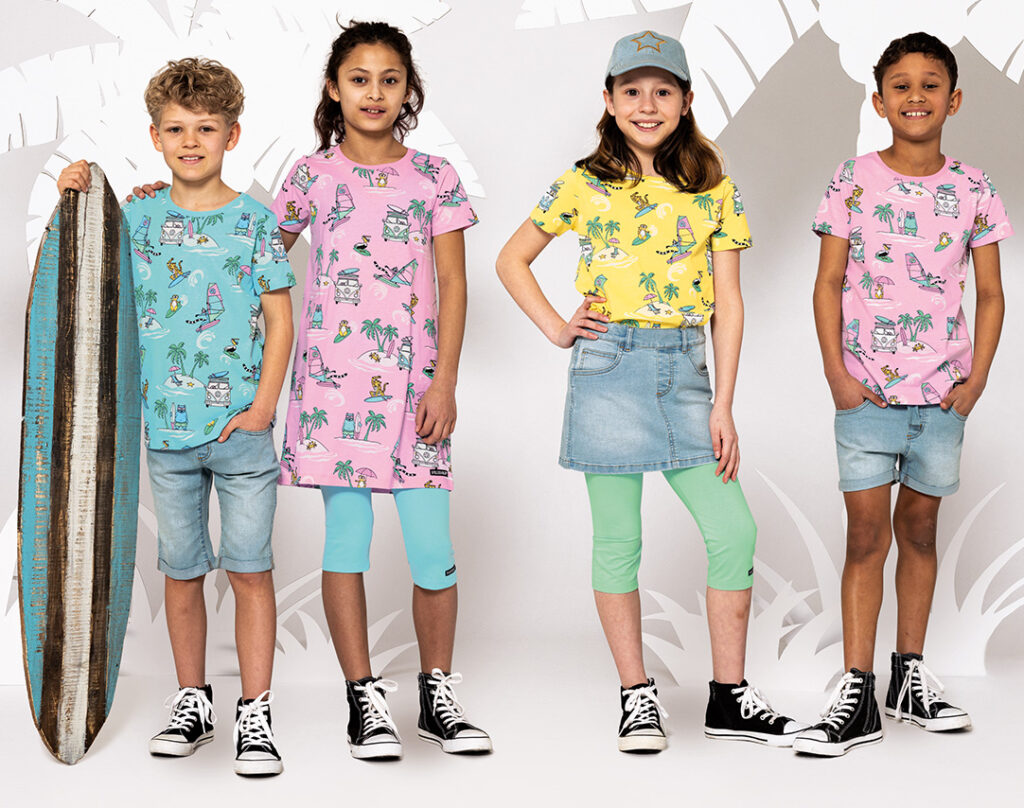
Credit: www.villervalla.com
Affordability And Accessibility
Emerging sustainable fashion brands for children focus on making eco-friendly clothing affordable. Parents want quality without breaking the bank. These brands offer stylish options without compromising the planet.
Cost-effective Eco-wear
Parents can find eco-wear that is budget-friendly. Many brands use recycled materials. This helps to lower production costs.
- Organic cotton t-shirts
- Recycled polyester jackets
- Bamboo fabric shorts
These items last longer than fast fashion. They save money in the long run. Here are some benefits of cost-effective eco-wear:
| Benefit | Description |
|---|---|
| Durability | Eco-friendly clothes tend to last longer. |
| Comfort | Natural fibers are soft and breathable. |
| Health | No harmful chemicals in the fabric. |
Where To Shop
Many stores now offer sustainable options. Here are some top places to shop:
- Online Retailers: Websites like EcoKids and Green Sprouts.
- Local Boutiques: Support small businesses in your area.
- Thrift Stores: Find unique second-hand clothing.
Shopping for sustainable children’s fashion is easier than ever. Parents can find stylish, affordable options that also protect the planet.
Inclusivity In Children’s Eco-fashion
Inclusivity is vital in children’s eco-fashion. Brands are now focusing on creating clothing for every child. This includes varying sizes and styles. Eco-friendly materials are used to promote sustainability. These brands aim to make every child feel special and included.
Sizing And Diversity
Many brands recognize the need for diverse sizing. Children come in all shapes and sizes. Here are some key points on sizing:
- Clothes must fit children comfortably.
- Sizes should range from baby to teen.
- Inclusive brands celebrate body diversity.
This approach helps every child find the right fit. It also boosts their confidence and self-esteem.
Adaptive Clothing For All
Adaptive clothing is essential for children with disabilities. These garments provide comfort and ease of dressing. Some features of adaptive clothing include:
- Easy closures like Velcro.
- Stretchy fabrics for movement.
- Designs that accommodate medical devices.
Brands are making strides in this area. They ensure that all children can wear stylish, eco-friendly clothes. This makes fashion accessible to every child.
The Lifecycle Of Sustainable Garments
The lifecycle of sustainable garments focuses on eco-friendly practices. It emphasizes durability, recycling, and reusing clothes. This approach reduces waste and promotes responsible consumption. Understanding this lifecycle is essential for conscious parents.
Durability And Longevity
Sustainable fashion brands for children prioritize durability. They use high-quality materials that last longer. Here are some benefits of durable garments:
- Cost-effective: Fewer replacements save money.
- Environmentally friendly: Less waste in landfills.
- Comfort: Better fabrics enhance comfort and wearability.
Brands focus on timeless designs that can be worn longer. Children grow quickly. Durable clothing can be passed down to siblings or friends.
Recycling And Reusing Clothes
Recycling and reusing clothes play vital roles in sustainability. Here’s how sustainable brands encourage this practice:
- Take-back programs: Brands accept old clothes for recycling.
- Upcycling: Old garments transformed into new products.
- Community swaps: Encourage families to trade clothes.
Recycling reduces the need for new resources. It also cuts down on pollution. Kids can learn the value of reusing clothes. Teaching them these habits fosters a culture of sustainability.
Community And Collaboration
Emerging sustainable fashion brands for children thrive on community and collaboration. These brands focus on local support and innovative ideas. They bring together parents, designers, and eco-conscious individuals.
Supporting Local Brands
Local brands play a vital role in sustainable fashion. They create jobs and boost the economy. Supporting local means:
- Choosing shorter supply chains
- Reducing carbon footprints
- Encouraging craftsmanship
Many local brands use organic materials. They often focus on eco-friendly production methods. Parents can find unique styles that stand out.
Crowdfunding Green Innovations
Crowdfunding helps new ideas grow. Many brands use it to launch sustainable projects. Here are some popular platforms:
| Platform | Focus Area |
|---|---|
| Kickstarter | Creative projects |
| Indiegogo | Technology and innovation |
| GoFundMe | Community support |
Through crowdfunding, brands can:
- Test new ideas
- Engage with customers
- Raise funds for sustainable practices
Parents can help by sharing these projects. Their support can make a big difference.
Educating The Next Generation
Teaching kids about sustainability is vital. Kids need to understand how their choices affect the planet. Emerging sustainable fashion brands for children play a big role in this education. They promote eco-friendly values through their clothing and materials. Parents can support these brands while teaching kids important lessons.
Eco-friendly Learning Resources
Parents can find many resources to teach kids about sustainability. Here are some great options:
- Books: Choose stories that focus on nature and sustainability.
- Documentaries: Watch kid-friendly films about the environment.
- Online Courses: Enroll children in courses about eco-friendly practices.
- Activities: Engage kids in crafts using recycled materials.
These resources help kids connect with sustainability. They learn about the importance of protecting the earth.
Teaching Kids About Sustainability
Teaching kids about sustainability can be fun and engaging. Here are some effective methods:
- Start with Basics: Explain what sustainability means.
- Use Real-Life Examples: Show how everyday choices impact the environment.
- Encourage Questions: Let kids ask about sustainability topics.
- Make it Hands-On: Involve kids in gardening or recycling projects.
- Visit Eco-Friendly Places: Take trips to local farms or nature reserves.
Through these methods, kids grasp sustainability concepts. They develop a sense of responsibility towards the earth.
The Future Of Kids’ Fashion
The future of kids’ fashion is bright and green. Sustainable brands are emerging to meet the needs of eco-conscious parents. These brands focus on style, comfort, and the environment. They aim to create clothing that is safe for children and the planet.
Emerging Trends
New trends in sustainable children’s fashion are exciting. They include:
- Eco-friendly Materials: Brands use organic cotton, bamboo, and recycled fabrics.
- Gender-neutral Styles: Clothing that suits all kids, regardless of gender.
- Durability: Focus on long-lasting designs that withstand playtime.
- Upcycling: Transforming old clothes into new stylish pieces.
Sustaining Momentum For Change
Many brands are committed to making a difference. They follow ethical practices and support fair wages. Here are some key players:
| Brand Name | Key Feature |
|---|---|
| Mini Rodini | Organic materials and playful designs. |
| Frugi | 100% organic cotton and fair trade practices. |
| Little Green Radicals | Bright colors and ethical production. |
Parents can support these brands for a better future. Sustainable fashion for kids is not just a trend; it’s a movement. It promotes a healthier planet and teaches children the importance of caring for the environment.
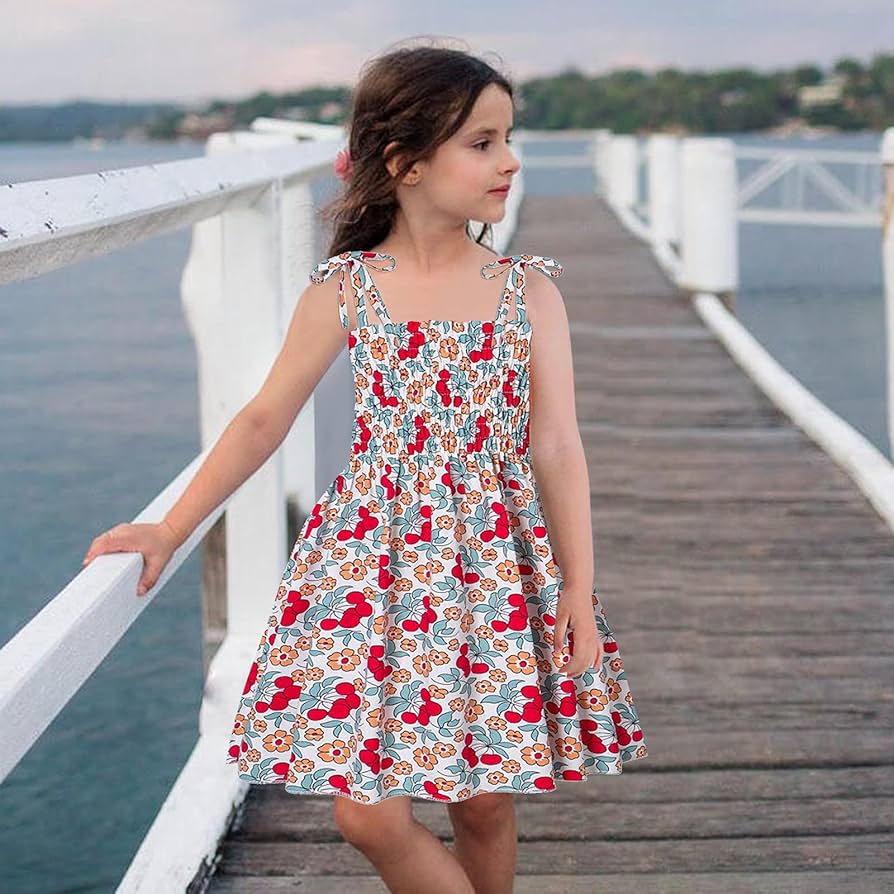
Credit: www.amazon.com
Frequently Asked Questions
What Are Sustainable Fashion Brands For Children?
Sustainable fashion brands for children focus on eco-friendly materials and ethical production methods, promoting a healthier planet for future generations.
Why Choose Sustainable Clothing For Kids?
Choosing sustainable clothing for kids reduces environmental impact and ensures safer, non-toxic fabrics for children’s sensitive skin.
How Do I Find Eco-friendly Kids’ Fashion?
Look for certifications like GOTS or OEKO-TEX, and explore brands committed to sustainability, transparency, and ethical practices.
What Are Some Popular Sustainable Kids’ Brands?
Popular sustainable kids’ brands include Mini Rodini, Frugi, and Tootsa, known for their stylish, eco-friendly collections that prioritize sustainability.
Conclusion
Supporting sustainable fashion brands for children is a step towards a healthier planet. These brands prioritize eco-friendly materials and ethical practices. By choosing sustainable options, parents can teach kids the value of environmental responsibility. Together, we can create a brighter future for our children and the world they will inherit.



